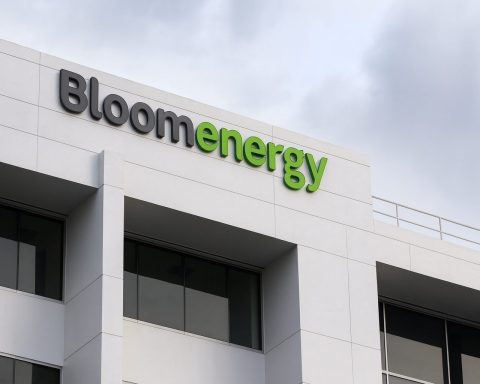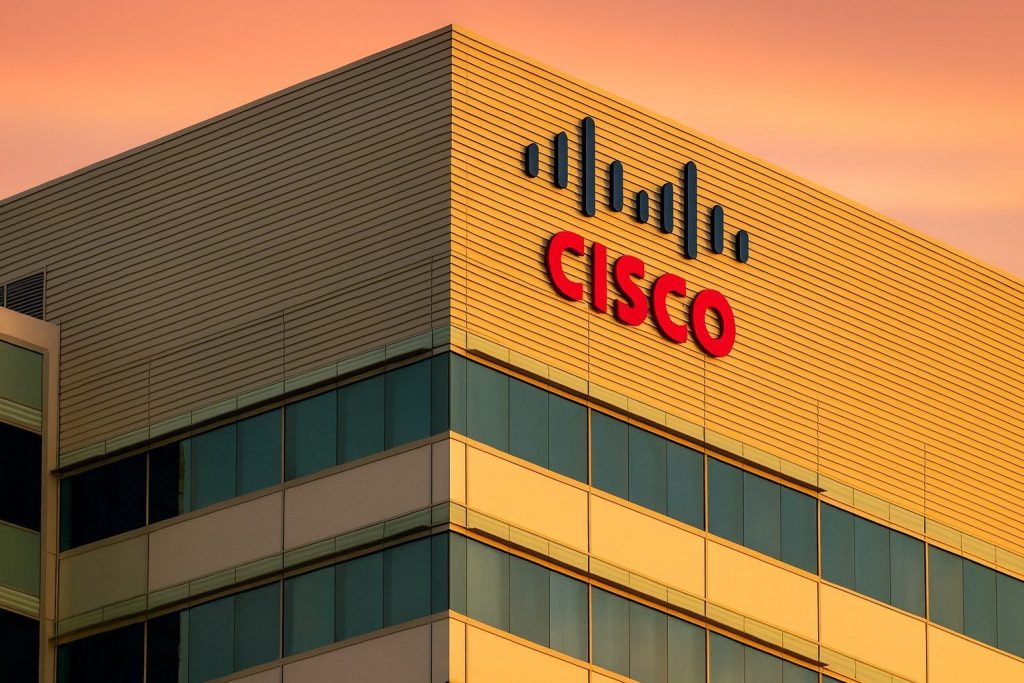Amprius Technologies (NYSE: AMPX) — the silicon‑anode battery maker behind some of the highest‑energy lithium‑ion cells in the industry — is back on traders’ radar today, November 25, 2025. The stock is riding the afterglow of record third‑quarter results, a new Korea battery alliance, and growing traction in unmanned aerial vehicles (UAVs) and advanced aviation.
Below is a data‑driven look at how AMPX stock is trading today, what’s driving sentiment, and the key risks and catalysts investors are watching next.
AMPX stock price today (11/25/2025)
As of the latest trading data on Tuesday, AMPX is changing hands around $10.80 per share, after a strong rebound to start the week. That follows Monday’s 6.82% jump, when the stock closed at $10.80, up from $10.11, on volume of roughly 6.6 million shares. [1]
Key trading stats around today’s session:
- Last price: ~$10.80
- Previous close: $10.11
- Intraday range so far: roughly $10.16 – $10.90
- Today’s volume: about 6.6 million shares, in line with recent activity
- Market cap: around $1.3 billion at current levels [2]
Despite Monday’s pop and today’s firm tone, AMPX is still well below its recent highs. The stock hit an all‑time closing high of $14.61 on October 15 and has traded in a 52‑week range of approximately $1.63 to $16.03, representing a more than 400% gain over the past year from its lows but with wild swings along the way. [3]
Short‑term price action remains choppy. One technical research site notes that AMPX has fallen in seven of the last ten sessions and is down about 20% over that stretch, even after Monday’s rally, with average daily volatility above 10%. It also highlights a divergence where volume fell on the latest move higher — often a sign to “watch closely” rather than assume the bounce will automatically continue. [4]
For traders, the takeaway is clear: AMPX is a high‑beta, high‑volatility clean‑tech name, capable of double‑digit percentage swings over very short periods.
Q3 2025: Record revenue, narrower losses, and early operating leverage
Fundamentals are a big reason AMPX has been so active in November.
On November 6, 2025, Amprius reported record Q3 2025 results, beating Wall Street expectations on both revenue and earnings:
- Revenue: $21.4–21.43 million, vs. ~$16.5 million expected
- Growth: up 42% quarter‑over‑quarter and 173% year‑over‑year
- EPS:–$0.03, beating the –$0.06 consensus by three cents [5]
According to a detailed earnings summary, Q3 also showed signs of improving unit economics and scale: [6]
- Gross margin improved to about 15%, up from 9% in the prior quarter.
- Amprius shipped batteries to 159 end customers, adding 80 new customers in just one quarter.
- The company’s second‑generation SiCore® batteries drove more than a 4x increase in shipments vs. Q3 2024.
- Approximately 75% of Q3 revenue came from aviation, especially UAVs and high‑altitude platforms.
- Roughly 75% of revenue was generated outside the United States, underscoring Amprius’ global footprint.
- Amprius also secured a $35 million follow‑on purchase order from a leading UAS manufacturer, reinforcing demand visibility from defense and drone customers.
Even with this momentum, Amprius is not yet profitable. Over the trailing 12 months, the company has generated about $58.4 million in revenue and a net loss of roughly $31 million, with negative free cash flow of around $32 million, according to aggregated financial data. [7]
The good news for the balance sheet: Q3 ended with about $73 million in cash and no debt, giving Amprius some runway to keep scaling manufacturing and R&D — but not unlimited time if losses remain sizable. [8]
What Amprius actually does: silicon‑anode batteries with extreme energy density
Amprius is not a general‑purpose battery name; it’s a specialist in high‑performance silicon‑anode lithium‑ion cells.
Across its SiCore® and SiMaxx™ product lines, the company’s batteries deliver: [9]
- Up to 450 Wh/kg and 1,150 Wh/L energy density today
- Third‑party validation of 500 Wh/kg and 1,300 Wh/L in development cells
- Ability to reach 80% charge in as little as six minutes on certain platforms
- Reliable operation over a wide temperature range, making them attractive for demanding aerospace and defense missions
That energy density is a big deal for drones, high‑altitude pseudo‑satellites (HAPS), eVTOL aircraft and other electric air platforms, where every gram counts. Longer flight times and heavier payloads can be the difference between a viable and a non‑viable mission profile. [10]
This technology edge is one reason Amprius has attracted blue‑chip partners and customers across aviation, defense, and now consumer‑electronics ecosystems.
New catalysts: Korea Battery Alliance, ESAero deal, and Amazon program
Amprius Korea Battery Alliance: scaling up in Asia
On November 12, 2025, Amprius announced the Amprius Korea Battery Alliance, a strategic initiative aimed at expanding its manufacturing and supply‑chain presence in South Korea. [11]
Key points from the announcement:
- The alliance includes battery manufacturers, materials suppliers, cell‑component producers, equipment makers and investors in Korea’s battery ecosystem.
- Amprius is using the alliance to secure critical supply chain partners and diversify its contract manufacturing, pushing its global contract capacity above 2.0 GWh annually (up from about 1.8 GWh referenced around Q3). [12]
- Management framed the move as a way to improve scalability and cost efficiency while tightening links between R&D, manufacturing and customers across the U.S., China, and South Korea. [13]
For AMPX shareholders, the alliance reinforces a central part of the bull thesis: Amprius doesn’t need to build every gigafactory itself. Instead, it can leverage contract manufacturers in multiple regions, potentially reducing capex needs and time‑to‑market for new cells.
ESAero partnership: more proof of UAV traction
In October, Amprius revealed that Empirical Systems Aerospace (ESAero) selected its SiCore® SA08 cell to power next‑generation UAVs used in defense, logistics, public‑safety, and security applications. [14]
ESAero chose Amprius’ high‑power silicon‑anode cells for their ability to:
- Extend flight time
- Increase payload capacity
- Operate reliably in demanding environments
The SA08 cells are already available in volume, meaning this isn’t merely a lab trial — it’s an integration that can contribute to near‑term shipments. [15]
Amazon Devices Climate Tech Accelerator: a long‑tail consumer opportunity
On the consumer and IoT side, Amprius has also been selected for the 2025 Amazon Devices Climate Tech Accelerator, a 16‑week program that helps climate‑tech companies explore deployment in millions of Amazon devices. [16]
Highlights:
- Amprius was selected based on the climate impact potential of its SiCore® platform, which can deliver up to ~80% higher energy density than conventional lithium‑ion batteries, enabling longer runtimes and lighter devices. [17]
- The program gives Amprius direct access to Amazon technical and sustainability teams to explore real product integrations. [18]
While any Amazon‑related revenue remains speculative at this stage, inclusion in the program validates the technology and opens a new, very large addressable market beyond aviation.
The other side of the AMPX story: risks and red flags
For all of the excitement, AMPX is far from a risk‑free battery stock. Several key concerns stand out.
Still unprofitable and cash‑consuming
- Trailing twelve‑month revenue of about $58 million is paired with a net loss of roughly $31 million and negative free cash flow around $32 million, reflecting heavy R&D, manufacturing ramp, and go‑to‑market spending. [19]
- While roughly $73 million in cash and no debt provide breathing room, Amprius has relied on at‑the‑market equity issuance to fund operations, which can dilute existing shareholders if continued. [20]
The company has made progress — Q3’s gross margin improved, and operating losses narrowed — but consistent profitability is still a work in progress.
Policy and execution risk: the Colorado plant saga
Amprius’ Brighton, Colorado factory illustrates the difficulty of scaling advanced manufacturing in a volatile policy environment.
- In 2023, the company announced plans for a $190 million vehicle battery plant in a 700,000‑plus‑square‑foot warehouse near Denver, with an eventual capacity of up to 10 GWh and more than 300 jobs. [21]
- By June 25, 2025, Amprius told local media it would not move beyond the design stage “at this time”, citing challenging market dynamics, tariff and subsidy uncertainty, and shifting federal clean‑energy incentives. [22]
- The company’s latest SEC filings still list the Brighton facility lease, but emphasize that the scope and timing of construction depend on funding and broader industry conditions, suggesting the project is effectively on hold. [23]
The cancellation/deferral underscores two things:
- Amprius is highly sensitive to policy and subsidy environments in the U.S. and abroad.
- Building massive new capacity on its own balance sheet is risky; hence the pivot toward global contract manufacturing and alliances.
Customer and geographic concentration
Q3 results and earnings commentary indicate that: [24]
- About three‑quarters of revenue comes from aviation, especially UAVs.
- Around 75% of revenue is generated outside the U.S.
That concentration cuts both ways. It gives Amprius a clear beachhead market — high‑value, performance‑critical aerospace applications — but also exposes the company to:
- Defense‑budget cycles
- Export controls and geopolitical tensions
- Trade policy shifts and tariffs
If demand in aerospace/UAV markets softens, or if export rules tighten, Amprius’ near‑term growth path could be disrupted.
Valuation and volatility
Based on recent data, Amprius trades at roughly: [25]
- Price‑to‑sales: around 12x trailing revenue
- Price‑to‑book: a bit over 4x
- Still no meaningful P/E or free‑cash‑flow multiple, given negative earnings and cash flow
Those are lofty multiples for a company that is still loss‑making and highly volatile. One technical‑analysis platform currently labels AMPX a “sell candidate” in the very near term, even while acknowledging a strong longer‑term uptrend, citing recent downside momentum and mixed moving‑average signals. [26]
How Wall Street views AMPX right now
Despite the risks, sell‑side analysts remain broadly bullish on AMPX:
- Multiple aggregators show a “Strong Buy” consensus, with 6–7 analysts rating the stock a buy and none calling for a sell. [27]
- One widely followed forecast site pegs the 12‑month average price target around $13–14 per share, implying roughly 20–30% upside from current levels, with some targets reaching as high as $18. [28]
At the same time, technical and quant‑oriented services emphasize that AMPX has experienced a steep pullback since mid‑October and that momentum remains fragile even after Monday’s rally. [29]
As always, these are third‑party opinions, not guarantees. Analyst ratings and targets can change quickly when dealing with early‑stage, story‑driven companies.
What to watch next for AMPX stock
For investors and traders tracking AMPX over the coming weeks and months, several catalysts stand out:
- Q4 2025 and 2026 guidance
- The next earnings release is currently expected around March 19, 2026, with consensus calling for another modest loss but continued revenue growth. [30]
- Any update on profitability timelines, gross‑margin progression, or long‑term model targets will be closely scrutinized.
- Manufacturing scale‑up and supply‑chain news
- Further details on how quickly Amprius can utilize its >2 GWh global contract capacity — especially through the Korea Battery Alliance — will matter for revenue and margin trajectories. [31]
- New design wins and large orders
- Policy and regulatory developments
- Changes to clean‑energy subsidies, tariffs, and defense spending — in the U.S., Europe, South Korea, or key export markets — could significantly affect both demand and where Amprius chooses to build capacity. [34]
Bottom line
On November 25, 2025, AMPX stock sits in a classic high‑growth, high‑risk zone:
- The company has genuine technology differentiation in high‑energy silicon‑anode batteries.
- Q3 2025 delivered record revenue, improving margins, and strong customer growth, particularly in aviation and UAVs.
- Strategic moves — from the Korea Battery Alliance to the ESAero deal and Amazon accelerator — strengthen the long‑term narrative.
But investors also have to weigh:
- Ongoing losses and negative free cash flow
- Execution and policy risk around manufacturing scale‑up
- Significant valuation and price volatility
Because of these trade‑offs, AMPX is likely to remain a story‑driven battleground stock, appealing to growth‑oriented investors comfortable with sharp swings — and less suitable for those seeking stable, cash‑flow‑rich names.
This article is for informational and educational purposes only and does not constitute financial or investment advice. Always do your own research, consider your risk tolerance, and consult a qualified financial adviser before making investment decisions.
References
1. stockinvest.us, 2. www.marketwatch.com, 3. www.macrotrends.net, 4. stockinvest.us, 5. www.marketbeat.com, 6. www.tipranks.com, 7. www.tipranks.com, 8. www.tipranks.com, 9. ir.amprius.com, 10. www.unmannedsystemstechnology.com, 11. ir.amprius.com, 12. ir.amprius.com, 13. ir.amprius.com, 14. amprius.com, 15. amprius.com, 16. ir.amprius.com, 17. ir.amprius.com, 18. www.unmannedsystemstechnology.com, 19. www.tipranks.com, 20. ir.amprius.com, 21. coloradosun.com, 22. coloradosun.com, 23. ir.amprius.com, 24. www.tipranks.com, 25. www.tipranks.com, 26. stockinvest.us, 27. www.tipranks.com, 28. stockanalysis.com, 29. stockinvest.us, 30. www.tipranks.com, 31. ir.amprius.com, 32. amprius.com, 33. ir.amprius.com, 34. coloradosun.com







